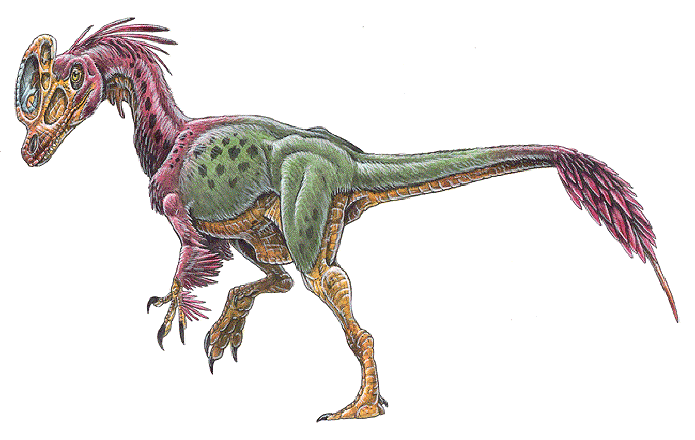 Brachiosaurus, one of the largest land animals to ever roam the earth, lived during the middle to late Jurassic period.
Brachiosaurus, one of the largest land animals to ever roam the earth, lived during the middle to late Jurassic period.Dinosaurs, one of the most successful groups of animals (in terms of longevity) that have ever lived, were found in many diverse sizes and shapes, with many diverse modes of living. The term Dinosauria was invented by Sir Richard Owen in 1842 to describe these fearfully great reptiles, specifically Megalosaurus, Iguanodon, and Hylaeosaurus, the only three dinosaurs known at the time. The creatures that we normally think of as dinosaurs lived during the Mesozoic Era, from late in the Triassic period (about 225 million years ago) until the end of the Cretaceous (about 65 million years ago). But we now know that they actually live on today as the birds.
Firmly planted between the Triassic and the Cretaceous periods of geologic time, the Jurassic period lasted for approximately 70 million years, beginning 206 mya (million years ago) and lasting until 144 mya.
Great plant-eating dinosaurs roamed the earth, feeding on lush, green ferns and palm-like cyads and bennettitaleans, Smaller, but vicious, carnivores stalked the great herbivores. Oceans teemed with fish, squid, coiled ammonites, great ichthyosaurs and long-necked plesiosaurs.
Today, when you think Jurassic, images of the incredibly successful book and movie “Jurassic Park” probably come to mind. Although it is true that dinosaurs dominated the land animals of that period, many of the dinosaurs featured in “Jurassic Park”, such as the Triceratops and the Tyrannosaurus rex, did not emerge until after the Jurassic was over. The largest land animals of the Jurassic period were the gigantic sauropods, such as the Diplodocus, Brachiosaurus and Apatosaurus. Other herbivorous dinosaurs of the Jurassic included the plated stegosaurs. Fearsome predatory dinosaurs included carnosaurs such as Allosaurus, small, fast coelurosaurs, and ceratosaurs such as Dilophosaurus. The first birds, such as the Archaeopteryx, appears during the Jurassic as well.




